#contemporary German cinema
Photo




Sucuk Und Bratwurst is a creative studio run by alessandro belliero, david gönner, denis olgac & lukas olgac.
Made up of the same precious materials as the devotional objects, the campaign suggests that the sole of the Nike shoe is as valuable as any museum-grade item, and so should be collected like one.
https://sucukundbratwurst.de/
#ad#nike#shoes#art#direction#print#cool#museum#german#germany#adobe#creative#studio#reference#modern#contemporary#design#3d#4d#cinema#cinema4d
2 notes
·
View notes
Text
Deep dives into folklore: Werewolves
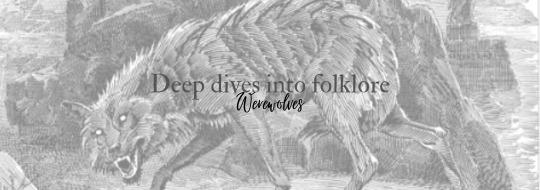
Werewolves, often depicted as humans with the ability to transform into wolves or wolf-like creatures during the full moon, have been a recurring theme in literature and mythology for centuries. The concept of the werewolf has evolved significantly over time, reflecting the changing beliefs, fears, and societal norms of different cultures. Today we are exploring the fascinating journey of the werewolf from its ancient origins to its modern-day interpretations in literature and popular culture.
The origins of the werewolf myth can be traced back to the ancient civilizations of Greece and Rome. In Greek mythology, the legend of Lycaon tells the story of a king who was transformed into a wolf as punishment for serving human flesh to the gods. This early representation of lycanthropy, the ability to shape-shift into a wolf, laid the groundwork for future werewolf tales. In Roman literature, the story of Ovid's "Metamorphoses" also features a man named Arcas transformed into a bear by the god Jupiter, an early example of shape-shifting.
During the Middle Ages, the werewolf myth gained prominence in European folklore. In a time when superstitions and fear of the unknown were rampant, the idea of humans transforming into vicious beasts under the influence of the moon became deeply ingrained in the collective psyche. The term "werewolf" itself is of Old English origin, derived from "wer" meaning man and "wulf" meaning wolf. This era saw the emergence of numerous werewolf legends and stories, often used to explain mysterious disappearances or brutal killings. One of the most famous cases was that of Peter Stumpp, a 16th-century German farmer who claimed to have made a pact with the devil and confessed to committing gruesome murders while in wolf form. Such tales served to stoke the fear of the supernatural and the unknown.
As Europe transitioned from the Middle Ages to the Renaissance and Enlightenment periods, the werewolf myth underwent a transformation of its own. The Age of Reason prompted a shift towards skepticism and rationality, and werewolf stories became less prominent. However, they did not disappear entirely. Some writers and scholars explored the psychological aspects of lycanthropy, viewing it as a metaphor for the duality of human nature. This concept laid the groundwork for the exploration of the werewolf's inner struggle in later literature.
The 19th century saw a revival of interest in the supernatural, and werewolves made a comeback in literature. Folklorists and writers like The Brothers Grimm and E.T.A. Hoffmann delved into the darker aspects of folklore, resurrecting old werewolf legends and incorporating them into their stories. One of the most famous literary works featuring a werewolf is "The Wolfman" by Marie de Villeneuve, which introduced elements of tragic transformation and a curse, themes that would continue to be explored in later literature.
In the 20th century, the werewolf evolved into a complex and multifaceted character. With the advent of cinema and the horror genre, werewolves became popular subjects for films like "The Wolf Man" (1941) and "An American Werewolf in London" (1981). These films portrayed the werewolf as a tortured and sympathetic figure, struggling with their monstrous nature.
In contemporary literature and popular culture, the werewolf has continued to evolve. Authors like Anne Rice and Patricia Briggs have explored the psychological and emotional aspects of lycanthropy in their novels, portraying werewolves as individuals with unique abilities and challenges. The popular "Twilight" series by Stephenie Meyer introduced a new generation to the idea of werewolves as members of a close-knit pack, bound by loyalty and a shared destiny.
The werewolf, a creature born of ancient mythology, has undergone a remarkable evolution in literature and popular culture. From its origins in Greek and Roman mythology to its prominent place in medieval European folklore, and its subsequent reimagining in the modern era, the werewolf has adapted to reflect the changing fears, beliefs, and values of society. Today, the werewolf remains a symbol of the eternal struggle between the human and the beast within, a reflection of our ongoing fascination with the supernatural and the mysteries of the human psyche. Its enduring presence in literature and mythology ensures that the legend of the werewolf will continue to evolve and captivate audiences for generations to come.
#writeblr#writers of tumblr#bookish#writing#booklr#fantasy books#creative writing#book blog#ya fantasy books#ya books#deep dives into folklore#folklore#werewolves#twilight#werewolf#books#literature
37 notes
·
View notes
Text
54 & 55/100 days of productivity
Tuesday, October 3rd 2023
To compensate for the unproductive (though lovely) weekend i spent, yesterday and today I worked hard. Nonetheless, last week was very busy because I was part of the organizing team of a philosophy event that happened from monday to thursday. It went very well, thankfully! No major problems. Not only I organized it, I also got to watch a bunch of interesting lectures and even give one myself! My first ever lecture given as a philosopher!!!! Plus, EVERYONE LOVED MY PRESENTATION!!!!! It was actually amazing, the audience had loads of questions for me, they wanted more! So I think my weekend was deserved.
Anyway, yesterday I:
went to uni for the philosophy of technology class
studied Husserl's fenomenology by reading and watching videos
wrote 1 page of a work on Husserl
watched the german movie "The Tin Drum" for today's class of Cinema and Philosophy
For the Contemporary Philosophy subject I have a work due the 10th that has a first part about Nietzsche and a second on Husserl. I have 2 pages done for Nietzsche and needed to write one more today, while I have to write 2 more for Husserl. It's very hard though!!! Anyways, today I:
went to uni and had classes from 9am to 1pm
then studied a bit of Hume's philosophy with a friend for Metaphysics class (we have a test on the 10th)
got home, started and managed to finish this week's activity on Rousseau for Political Theory class (so fast!!)
read a few pages of a text by Heidegger. that one was really tough. (and i ended up falling asleep)
finished Nietzsche's part of the paper!!
Here's a pic from when I was studying yesterday:

#chaotic academia#philosophy#light academia#dark academia#studyblr#philosophyblr#classic academia#college#study motivation#uni life#university life#philosophy student#friend of wisdom#student life#study inspo#100dop#100 days of productivity
20 notes
·
View notes
Note
Hi ! 😊
I’ve recently gotten into films and cinema but I don’t really know where to start with the “classics”? Could you maybe give me a few recs? I’d really appreciate it, thank you !!
I don't know if you thought this is an easy question, but I had no idea where to start.
Anyway, I've made a list of suggestions for European cinema and I'll tell you what are the best ways to find something interesting to watch, regardless of country of origin.
Usually, the history of cinema can be divided by countries, so you have the national cinema perspective. All you have to do is look for the well known films of a certain country – like Iranian Cinema, Japanese cinema, Swedish Cinema and so on.
Another way is to search it by cinematic movements and that's how I did it in part for the European cinema: the Czech New Wave in the 60s is different than the contemporary Czech Cinema.
Search the film of a certain director. The films that I added in the list are all made by really known directors. It may sound overwhelming, but once you start, then it just happens naturally. You find a director, you watch 2 or 3 films, you look up other films made in the same country in the same period and slowly, you start making connections and you'll be able to see the bigger picture.
Now, the list that I made does not encompass everything. Far from it, I didn't even go too much into contemporary cinema. This takes an entire year in film school to be able to go through the major titles and movements and it doesn't come close to all the classics. But it's a starting point and it will help you discover films on your own.
German Expressionism – The Cabinet of Doctor Caligari, Nosferatu, Metropolis
French Impressionism and Surrealism – Napoleon, Le coquille et le clergyman, Entr'acte, Un Chien Andalou, Le sang d'un poete
Italian neorealism – Ladri di biciclette, Umberto D, Roma, citta aperta, Le notte di Cabiria, Rocco e i suoi fratelli
Mid century & more - British cinema – Brief Encounter, Look Back in Anger, Darling, Kes, If...., Lawrence of Arabia, The Red Shoes, Blow-Up, A Clockwork Orange, Don't Look Now,
French New Wave – A bout de souffle, Les quatre cents coup, Une femme et une femme, Jules et Jim, Vivre sa vie, Pierrot le fou, Le mepris, Les parapluies de Cherbourg, Le genou de Claire, Le feu follet.
More French cinema – La passion de Jeanne d'Arc, La regle du jeu, Hiroshima mon anour, Le charme discret de la bourgeoisie, Belle de jour, Au revoir les enfants, La haine, Beau travail, Journal d'un cure de campagne, Last Year at Marienbad, Le samourai, La nuit americaine, The piano teacher, Un prophet, Holy Motors, Amour, Irma Vep, The class (2008), Elle.
More Italian cinema – L'avventura, La dolce vita, Otto e mezzo, Il gattopardo, Death in Venice, Il conformista, Cinema paradiso, La grande bellezza, Stromboli, Teorema
Central and Eastern European cinema (socialist cinema) – Loves Of a Blonde, Closely Watched Trains, Daisies, Ashes and Diamonds, The Mirror, Diary for my children, The decalogue series, Time of the gypsies
Check out the films made based on the Dogma 95 manifesto.
With American cinema, I suggest you take each decade and see what are the major titles. There are a lot of films and I would still be here writing by tomorrow morning. I recommend using Mubi, you can type : ''quintessential American Cinema'' or ''1970s American Cinema'', etc.
I recommend you don't stop at European/American Cinema, despite the list that I made for you. Unfortunately, it's easier to come up with film titles because this is what's taught in film school. Everything else is under the ''global'/world cinema'' term and the debate is a lot more complex. As I said, use the national cinema approach if you really want to explore this.
If you have any more questions, you can ask, and it would be a lot easier if you have something more specific in mind.
16 notes
·
View notes
Text
Watching Resolution: Different from the Others (1919)
3. A silent or dialogue-free film: Different from the Others (1919)
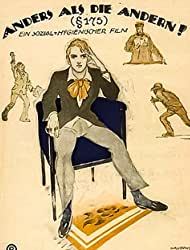
List Progress: 4/12
So much of queer history has been overlooked, erased or lost over the span of time, so what does remain is precious. Different from the Others (Anders als die Andern in the original German) is a 1919 silent film, and contains one of the first direct references to homosexuality in the history of cinema, and is almost certainly the first pro-gay film ever made. The film is a polemic, a simple and direct story making the full-throated argument that, in opposition to Germany’s Paragraph 175 law of the time, homosexuality should not be illegal and that queer people should be left alone to live their lives undisturbed. There is not a lot of nuance in the argument for modern audiences, but for people fighting for their lives, it was radical and in many ways still is today.
The film was helmed by doctor and sexologist Magnus Hirschfeld, a long-time proponent of queer rights. Conrad Veidt (who would become famous the next year for The Cabinet of Dr. Caligari) plays a violinist who falls in love with one of his students, and is blackmailed by someone who sees them together. The extortioner (played by Reinhold Schünzel) had previously enticed the violinist into making a move on him and has been haunting him ever since, constantly dangling the threat of exposure and legal prosecution. The violinist eventually reaches his limit and takes a stand against his blackmailer, but because of the legal, social and personal obstacles, the story has nowhere to go but to end in tragedy. In case there is any ambiguity, Hirschfeld appears in the film himself as a doctor, defending the violinist and his lover and denouncing Paragraph 175.
Different from the Others was so widely censored and opposed that a full cut of the film no longer exists. Large portions are missing, with summaries of the missing scenes included as intertitles and the occasional still set photograph. Entire characters, such as the student’s sister who is infatuated with the violinist, have been lost to time, but Veidt and Schünzel’s character arcs have thankfully been kept largely intact. The silent film style of acting is quite different then contemporary styles, with much larger motions and expressions to convey meaning, but both men find the nuance and humanity in their characters. Veidt as the violinist is begging the world to see him as a person, and has his plea soundly rejected. But even back in 1919, there were people who made this film, who watched it, and who agreed with it. It was only a step in the right direction, but still one worth celebrating.
Would I Recommend It: For viewers with a pre-existing interest in queer history or silent film. Not quite for the casual viewer.
6 notes
·
View notes
Photo

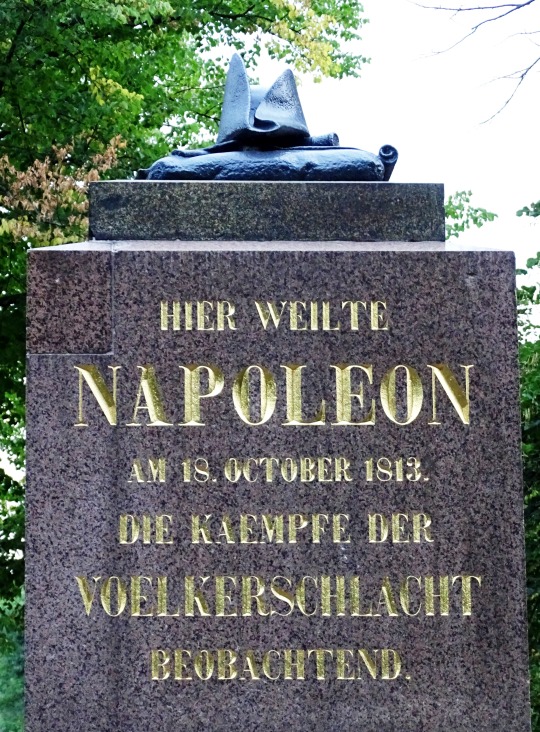

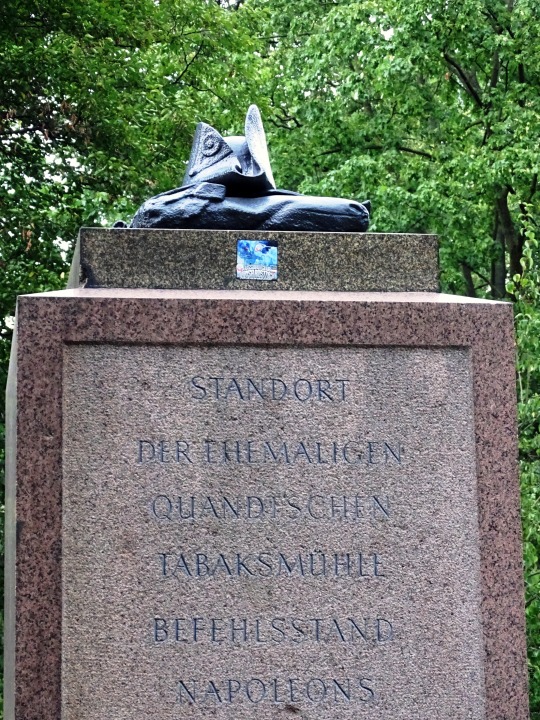
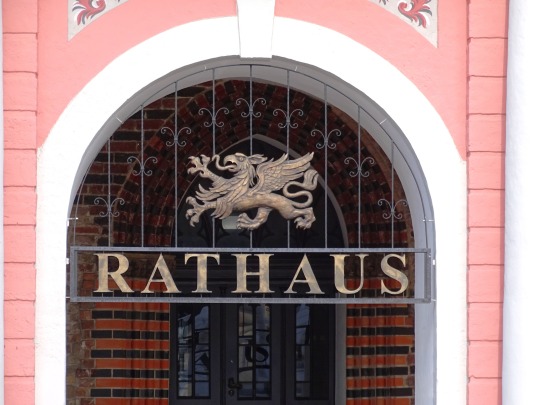

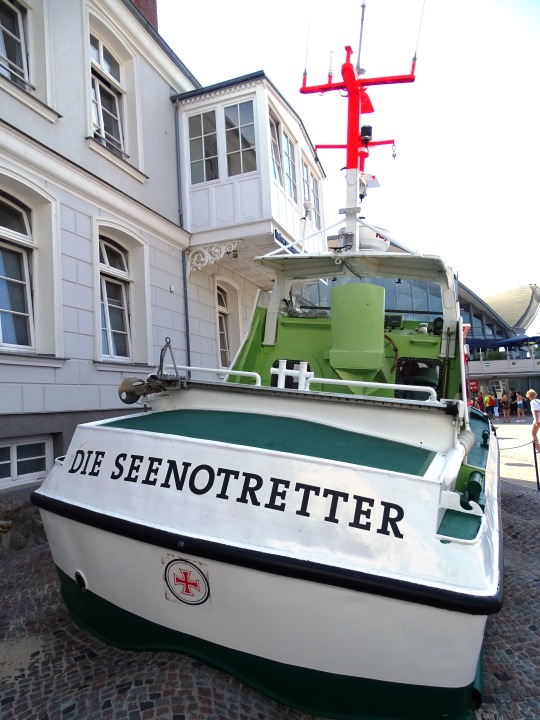
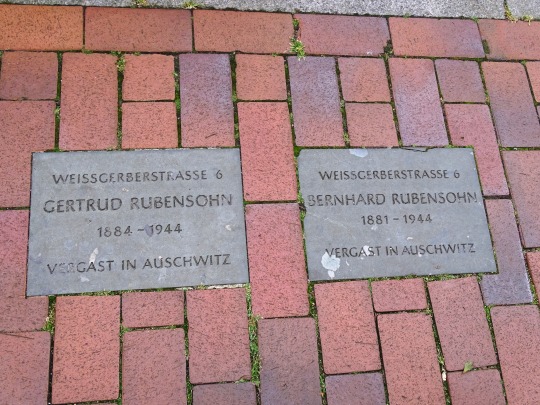

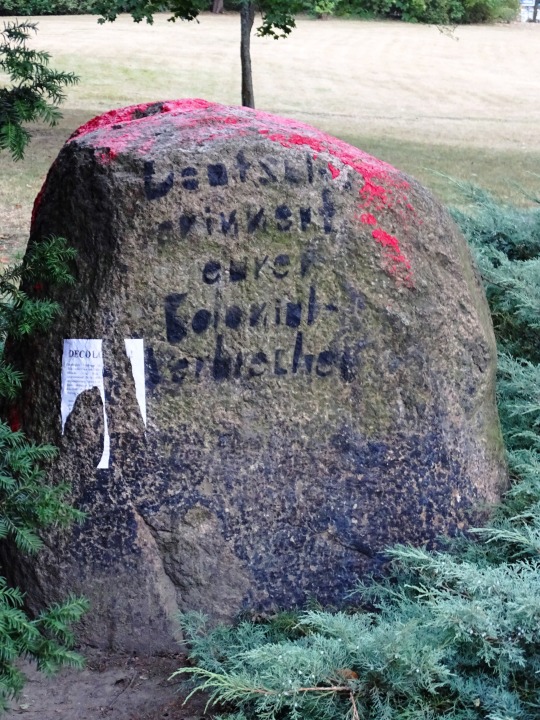
German Language Day
It’s one of the longest words in German and something to consider on National German Language Day, which occurs every September 10.
“Rindfleischetikettierungsüberwachungsaufgabenübertragungsgesetz” may seem like gibberish to the non-German language speaker. In actuality, this word (which we won’t even attempt to pronounce) is now obsolete. It translates as “Beef labeling monitoring delegation Act.” And yet, today, we mourn its loss.
German is the language of poets Bertolt Brecht, Rainer Maria Rilke and the classic Weimar-era cinema. To promote the language and encourage more people to learn it, the German Language Association (VDS) created this day 17 years ago, helping to revive the speaking of German across the globe.
German Language Day timeline
1st century B.C. The first recorded use of German
Historical records reveal that ancient Romans were in contact with German speakers.
1522 Lutherbibel is published
Luther translates the Bible into German, providing a people's alternative to the dominance of Latin.
1981 Famous German war movie, "Das Boot," is released
Directed by Wolfgang Peterson, this German classic earned fame all over the world.
2001 German Language Day debuts
The German Language Association (VDS) celebrated this day for the first time, embarking on an endeavor to promote the German language, worldwide.
German Language Day Activities
German, anyone?
Read a German classic
Have a beer. Prost!
Learning German can be a whole lot of fun, especially when you actually get a chance to use it on a European trip. But if you can't travel to Germany, right here in the United States, there are German pastry shops or bookstores where you can try out what you've learned.
Even an English translation will do. Because the more that you read, the more you'll learn. National German Language Day is also a great day to watch some classic German horror films like "Nosferatu" or "The Cabinet of Dr. Caligari."
Okay, so this is not exactly Oktoberfest. But as far as we know, anything German calls for a cold beer. And a meaty, bratwurst!
5 Facts About The German Language That Will Untwist Your Tongue
It's the sixth most widely-spoken language
German is the language of writers and thinkers
German and English are sister languages
Unlike English, German has three genders
German has some funny proverbs
By ranking, these are the most widely-spoken languages in the world: Chinese (encompassing both Mandarin and Cantonese,) English, Hindi-Urdu, Spanish, Russian and German. It's also the most widely-spoken language in Europe. Gut gemacht!
Goethe, Schiller, Brecht, Marx, Nietzsche — great thinkers all, were masters of the German language.
Both languages are a part of the West Germanic languages. German and English have greatly influenced each other’s cultures and sometimes, there's also a little sibling rivalry!
Masculine, feminine, and neuter. If that's hard to wrap your mind (and your mouth) around; some languages, like Polish, have six grammatical genders!
"Das ist nicht dein Bier" translates as, "that’s not your beer." But what it really means is, "this is none of your business, stay out!"
Why We Love German Language Day
German is the most widely-spoken language in Europe
Language and culture go hand-in-hand
Forgetting your mother tongue is a real loss
Spoken by 95 million people worldwide, German is the native language of Germany, Austria, Switzerland and Liechtenstein. Plus, it's fascinating when one German word contains 80 letters!
In a world where English is becoming the go-to language on the international stage; individual countries are working hard to maintain their own national lingua franca. Reviving the German language is also an attempt to preserve the culture and history of Germany. But if you want to learn contemporary German, watch German television on National German Language Day.
For German children living outside Germany, learning and speaking their mother tongue is one of the most important ways they can connect to their culture and heritage. It's also an added asset to be bilingual or even trilingual in today's international business climate.
Source
#Napoleonstein#Leipzig#Nürnberg#Nuremberg#Warnemünde#Germany#Deutschland#Stolperstein#Bern#Switzerland#Schweiz#Kolonialstein#German Language Day#GermanLanguageDay#TagDerDeutschenSprache#10 September#architecture#memoial#cityscape#original photography#summer 2020
3 notes
·
View notes
Text
Master German: Best German Language Course in Delhi

The German language course offered in Delhi provides an enriching experience for language enthusiasts and professionals alike. With its focus on linguistic proficiency and cultural immersion, this course serves as a gateway to the rich tapestry of German culture, history, and society.Delhi, being a cosmopolitan hub, offers an ideal setting for learning German. The course curriculum is meticulously designed to cater to the diverse needs of students, whether they are beginners or advanced learners. Through a combination of interactive classroom sessions, practical exercises, and immersive activities, students gain a comprehensive understanding of the language.One of the key strengths of the German language course in Delhi is its emphasis on real-world application. Students are encouraged to engage in conversations, presentations, and role-plays to enhance their speaking and listening skills. Additionally, the course integrates multimedia resources, authentic materials, and contemporary content to make the learning experience dynamic and relevant.Moreover, the course instructors are highly qualified and experienced professionals who are passionate about teaching German. They provide personalized attention and guidance to each student, fostering a supportive learning environment conducive to growth and development.Beyond language proficiency, the course also delves into the cultural nuances of the German-speaking world. From literature and art to customs and traditions, students gain insights into the cultural heritage that shapes the German identity. This holistic approach not only enhances language learning but also promotes intercultural understanding and appreciation.Furthermore, completing the German language course opens doors to a myriad of opportunities. Whether it's pursuing higher education in Germany, seeking employment in multinational companies, or simply exploring the vast expanse of German literature and cinema, proficiency in the language opens up a world of possibilities.In conclusion, the German language course in Delhi is more than just a means of mastering a foreign language; it's a journey of discovery, exploration, and personal growth. By immersing oneself in the language and culture of Germany, students embark on a transformative experience that broadens their horizons and enriches their lives in countless ways.
#German language course in Delhi#German language course#German language classes#German language classes in Delhi#German language institute
0 notes
Text
The New York African Film Festival Returns For 31st Year

Film at Lincoln Center and African Film Festival have announced the lineup for the 31st New York African Film Festival. The festival's mission is to feature filmmakers from the African diaspora. This year's theme is the Convergence Of Time and it explores the intersection of historical and contemporary roles played by individuals representing Africa and its diaspora in art. More than 50 films from more than 25 countries invite the audience to look at the meeting of past and current experimentalism transcending space and time.
The festival's opening night showcases the North American premiere of Over The Bridge, Tolu Ajayi’s feature about corruption in Lagos as Folarin, a successful investment banker whose company is contracted by the government to oversee a high-profile project, searches for answers when the project goes awry, which leads him to a remote fishing village to put the pieces of the mystery together.
The Closing Night selection features the New York premiere of Dibakar Das Roy’s riveting and uproarious Dilli Dark, which shows the boundaries Nigerian MBA candidate Michael Okeke will push to succeed as he lives a double life as a student and drug dealer amidst the backdrop of India’s history of colonialism, racism, and xenophobia.
The festival will also host the North American premieres of Matthew Leutwyler’s Fight Like a Girl, depicting the true story of a young Congolese woman (Ama Qamata from the hit Netflix series Blood and Water) who finds liberation after joining an all-women’s boxing club in Goma, led by an ex-child-soldier coach; and Oyiza Adaba’s biographical documentary DELA: The Making of El Anatsui, which delves into the life of El Anatsui, the world-renowned sculptor from Ghana, and triumphantly acknowledges the importance of Africa’s rich artistic and cultural heritage.
Three festival features are U.S. premieres: Yajaira De La Espada’s documentary Teacher Don’t Teach Me Nonsense, showcasing the life and empowering legacy of the founding father of Tanzania, Mwalimu Julius Nyerere, and the recent presidency of Dr. John Pombe Magufuli; Clive Will’s Time Spent with Cats Is Never Wasted, a stark piece of slow-burning cinema featuring a small-town worker who finds success after selling a helicopter he made out of scrap and found objects, while having to fight off the local townsfolk who insist on a cut of the profits; and Perivi Katjavivi’s Under the Hanging Tree, a hard-boiled crime thriller following police officer Christina, as she seeks to uncover details of a murder on a German-owned farm in present-day Namibia, set against echoes of the country’s history of genocide.
Five features making their New York debut are: Damien Hauser’s After the Long Rains, a touching account of 10-year-old Aisha, who longs to become a fisher so she can travel to Europe, and befriends an alcoholic fisherman who promises to teach her; Uche Aguh’s musical romance Dynamite, which finds musician Kiki in an unhappy marriage with her husband/manager and beginning a whirlwind romance with a replacement bassist in her band; Osvalde Lewat’s documentary MK: Mandela’s Secret Army, the little-known story of the military avant-garde founded by global icon Nelson Mandela, screening for the 30th anniversary of South African Freedom Day; This Is Lagos, Kenneth Gyang’s dark comedy featuring aspiring rapper Stevo navigating the dangers of his criminal past after an escape from a heist goes wrong; and The Rhythm and the Blues, the true-life story of legendary bluesman Eddie Taylor and his fight against obscurity, industry corruption, and cultural appropriation, starring actor and musician Leon.
An exciting addition to this year’s festival is La Chapelle, Jean-Michel Tchissoukou’s surreal take on the relationship between Africa, Christianity, and colonialism. A classic feature shot in 1980s Congo, this enchantingly bizarre and bitingly funny satire leaves one questioning the relevance of space and time.
Among many shorts premiering at NYAFF, not to be missed is Harold George’s Making Men. In a first for NYAFF, the screening of George’s film will be accompanied by a live dance performance from George and members of his dance troupe, as well as a discussion afterwards. A brilliant question of masculinity, visually probed via imagery of traditional customs, the film supplies modern questions with ancestral answers. Another, Love Taps, directed by Derrick Woodyard and executive produced by Spike Lee, offers another comment on masculinity, secrets, and family ties.
NYAFF will present an “Art & Activism” Town Hall at The Africa Center on Thursday, May 2, at 6:00pm, featuring artists Christian Nyampeta, Adama Delphine Fawundu, and Taiwo Aloba, moderated by cultural anthropologist, curator, and scholar Paulette Young.
This year’s Master Class presented by AFF will feature veteran independent filmmaker Ngozi Onwurah, who will discuss the craft of utilizing cinema as a tool for unmasking the dynamics of the socioeconomic status quo. The event takes place in the Amphitheater at the Elinor Bunin Munroe Film Center with tickets available through africanfilmny.org.
“A litany for past suns labeled rituals / A star lit any and all possible futures,” a digital art exhibit of the work of Zainab Aliyu, will run in the Amphitheater at the Elinor Bunin Munroe Film Center May 9–14 beginning 30 minutes before the first NYAFF screening of the day. The exhibit is inspired by Nikki Giovanni’s “A Litany for Peppe” (1970) and Audre Lorde’s “A Litany for Survival” (1978), two poems written years apart, yet converging thematically through time. As the title suggests, the piece is structured as a litany, a repetitive and rhythmic form often used in ceremonial settings. In this context, Aliyu’s litany serves as a call to action for her communities to alchemize their shared histories toward shared futures.
Tickets go on sale Thursday, April 11 at noon ET. Ticket prices are $17 for the general public; $14 for students, seniors, and persons with disabilities; and $12 for FLC Members. See more and save with a 3+ Film Package ($15 for general public; $12 for students, seniors (62+), and persons with disabilities; and $10 for FLC Members), the $99 All-Access Pass, or the $79 Student All-Access Pass. Contact [email protected] for information about attending the Opening Night Party.
The festival continues at Maysles Documentary Center in Harlem from April 17 to 19 and culminates at Brooklyn Academy of Music under the name Film Africa from May 24 to May 30 during Dance Africa.
The programs of AFF are made possible by the generous support of the National Endowment for the Arts, New York State Council on the Arts, New York Community Trust, NYC Department of Cultural Affairs, Bradley Family Foundation, Domenico Paulon Foundation, NYC & Company, French Cultural Services, Manhattan Portage, Black Hawk Imports, Essentia Water, South African Consulate General, National Film and Video Foundation, and Motion Picture Enterprises.
For more information, visit filmlinc.org and follow @filmlinc on X and Instagram.
More information about AFF can be found on the Web at www.africanfilmny.org. You can follow AFF at @africanfilmfest on X and Instagram.
0 notes
Text
Your Ultimate Guide to Learning German Language Online with the International Academy of Language

Embark on an exhilarating journey to learn the German language online with the International Academy of Language. German, with its passionate and intense nuances, is a captivating language that opens doors to a rich cultural heritage and professional opportunities. In this guide, we'll explore the advantages of learning German, share effective tips for vocabulary acquisition, help you choose the right teacher, and introduce you to the world of German lessons at the International Academy of Language.
Why Learn German?
1. Cultural and Historical Insight:
Learning German provides a profound understanding of the culture and history of German-speaking countries. From Switzerland's neutrality to Austria's economic stability, delve into the essence of these nations and appreciate their unique way of life.
2. Professional Opportunities:
German is a key language for career growth. Proficiency in German expands your professional horizons, offering opportunities in Germany, Switzerland, Austria, and other German-speaking regions. Many companies provide job opportunities and financial support for German language studies.
3. Access to Information:
Become part of the vast German-speaking online and scientific community. German is the second most widely spoken language on the Internet after English. Access scientific, technological, philosophical, journalistic, and cultural texts, broadening your knowledge base.
4. Cultural Enrichment:
Explore German cinema, literature, and contemporary works by iconic figures like Fassbinder, Goethe, and Hertha Müller. Understanding German culture enhances your enjoyment of films, literature, and art.
5. Travel:
Experience the magic of German cities and towns that inspired the Grimm Brothers' fairy tales. Speaking German enables you to immerse yourself in the culture, savor local dishes, and communicate comfortably while traveling.
6. Understand Germany's History:
Comprehend the intricate history of Germany, a country that plays a pivotal role in world politics. Gain insights into its economic power, earning Germany the title of the "Engine of Europe."
Advantages of Opting for Online Online German Language Course with Certificate from the International Academy of Language:
1. Flexible Learning:
International Academy of Language offers online German lessons, allowing you to learn from the comfort of your home. Enjoy flexibility in scheduling classes to suit your lifestyle.
2. Expert Instructors:
Access a grid of experienced German teachers on the platform. Learn from native or bilingual instructors who bring cultural insights to your language learning journey.
Tips for Learning German Vocabulary:
1. Start with Basic Vocabulary:
Learn 10-15 words daily, focusing on semantic families like food, objects, and transportation. Identify similarities with English to ease the learning process.
2. Contextual Learning:
Associate words with meaningful contexts, using visuals to aid memory. Integrate new words into examples and phrases to internalize their meanings.
3. Master Grammatical Genders:
Understand and classify words into masculine, feminine, or neuter genders. Utilize tricks, such as associating colors with genders, for effective learning.
4. Explore Prepositions:
Grasp the complexity of German prepositions, crucial in a location-focused language. Understand their usage in different cases to enhance your language skills.
5. Immerse Yourself in German Media:
Watch German series and films to enhance pronunciation skills. Explore the vast array of content available on platforms like Netflix.
6. Read in German:
Enhance language comprehension by reading texts of increasing difficulty.
7. Leverage Technology:
Utilize online resources, such as YouTube videos and German newspapers, to enhance your language skills. Leverage the internet for accessible and diverse learning materials.
8. Practice Speaking:
Engage in conversations with native speakers or proficient language learners. Consider choosing a German teacher from the International Academy of Language for personalized guidance.
Choosing the Right German Teacher:
1. Consider Your Motivation:
Determine your motivation for learning German – whether for work, personal, cultural, or educational reasons. Your motivation will guide your choice of a native or bilingual teacher.
2. Work-Related Reasons:
If your goal is career-oriented, a native teacher can offer expertise in vocabulary and cultural nuances, especially if you plan to work in a German-speaking country.
3. Personal or Cultural Reasons:
For personal, cultural, or travel motives, a bilingual teacher who understands the challenges of learning the language can provide valuable insights and tips.
International Academy of Language German Lessons:
1. Easy Registration Process:
Register on the International Academy of Language platform and browse through a list of experienced German teachers.
2. Customized Filters:
Use filters to refine your search based on preferences like native or bilingual teachers, desired price range, and preferred class timings.
3. Free Trial Classes:
Many teachers offer a 20-minute free trial. Utilize this opportunity to discuss your objectives and determine if the teacher aligns with your learning goals.
4. Virtual Classroom Features:
Access a comprehensive virtual classroom with tools like a virtual whiteboard, chat, document sharing, and file links for an immersive online learning experience.
5. Leave Feedback:
After each class, provide feedback to assist other learners in choosing the right teacher. If you have any questions, the customer service team is ready to assist.
Whether you're motivated by work, cultural exploration, or personal growth, the International Academy of Language is your gateway to mastering German. Join our platform, find your ideal teacher, and enjoy the benefits of learning the German language online. Don't wait – start your language-learning adventure now!
#Learn German Language Online#Online German Language Course with Certificate#Learn German Language Online in India#Online German Language Course with Certificate in India
0 notes
Text
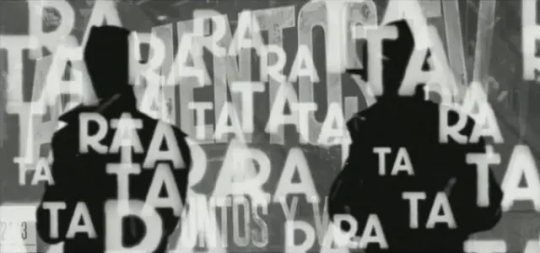
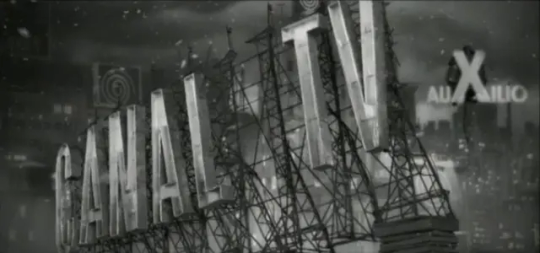





I recently re-watched the amazing filmic find: La Antenna, a “silent-film” made in 2007 by Argentinian Cinematographer and director Esteban Sapir.
Shot in a chalky black & white, with lavish, though lo-fi production design, it is probably the most typographic film I’ve even seen.
The in-shot captions are as much dramatic props as they are communication. The visual approach of La Antenna draws inspiration from Russian agitprop films and posters (the same inspirations as Canadian Guy Madden‘s wonderful films) but also a broad array of other influences including early German films like Fritz Lang’s Metropolis, 1940s American Film Noir, and even turn of the century cinema pioneers such as Georges Méliès.
Where La Antenna goes further (typographically speaking) than Madden’s films, is by stepping further away from the more strict authenticity that mark Madden’s efforts, into areas that also borrow from contemporary motion graphics and graphic novels, resulting in a far more adventurous and integrated use of type throughout. Definitely find and watch this one.
0 notes
Text
BLOG 2: Tools- Medium specificity in the digital age
Gesamtkunstwerk, a German term signifying "total work of art," originated in the early 19th century when German philosopher Karl Friedrich Trahndorff introduced it in 1827. From my perspective, this concept established a foundation for a holistic approach to art, where diverse artistic elements collaborate to create a singular, immersive experience. In studying this concept further, I feel that animated films might be regarded as Gesamtkunstwerk, representing the idea of the "total work of art." So, let's check!
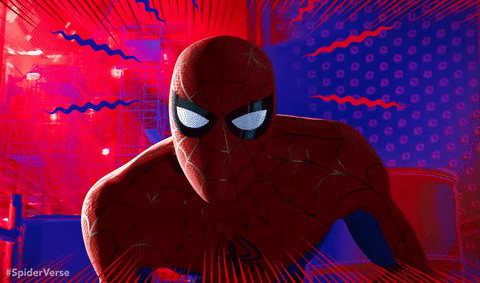
In my perspective, Animated movies are media objects, They align with the principle of Gesamtkunstwerk. They are a collaboration of various artistic disciplines, including animation, storytelling, music, sound design, voice acting, and visual design. Altogether these things make an immersive artistic experience. Through animation, filmmakers can evoke emotions in the audience by combining visual and auditory stimuli. The creation of animated movies requires a combination of technical and artistic expertise. Animators, illustrators, musicians, sound designers, and writers collaborate to bring the film to life. This collaborative effort is essential to Gesamtkunstwerk, where different forms of expertise converge to create a unified work. Animated movies aim to provide audiences with a holistic and immersive experience. Viewers simultaneously engage with the narrative, characters, visuals, and music, creating a complete and integrated artistic encounter. The intention is to transport the audience into a world where all elements work together seamlessly.
youtube
My personal favourite animated movie is “ Spider-Man: Into the Spider-Verse”. I think it fits with Gesamtkunstwerk due to its innovative and unique approach to animation, storytelling, and visual design. The film uses a combination of traditional 2D animation techniques, 3D animation, and comic book visual effects."Spider-Verse" features a dynamic soundtrack that complements the film's energetic and visually inventive style. The soundtrack includes a mix of hip-hop, pop, and other genres, adding cultural richness to the narrative. Hehe! My personal favourite song is Sunflower Song by Post Malone and Swae Lee.
youtube
The film explores the concept of the multiverse, introducing multiple Spider-People from different dimensions. Each Spider-Person comes with a unique visual style that reflects their comic book origins. This visual diversity, coupled with the exploration of parallel universes, adds layers to the film's visual storytelling and enhances the overall artistic experience."Spider-Verse" transcends genre; its bold and experimental approach appeals to both comic book enthusiasts and general audiences. By challenging genre expectations and embracing a unique visual and narrative style, the film expands the possibilities of what animated movies can achieve. The collaborative efforts of a diverse team of animators, directors, writers, and designers contributed to the film's success as a Gesamtkunstwerk. These elements that make "Spider-Verse" stand out as a total work of art
Medium Specificity
From my perspective, delving into the theory of medium specificity sheds light on the dynamic relationship between different artistic forms. Lev Manovich's assertion that "no single medium is dominant any longer" aligns with the contemporary narrative, emphasizing the interplay and mutual influence among diverse media (Weibel, 2006). "Spider-Man: Into the Spider-Verse," an animated film, exemplifies the impact of medium specificity. Manovich, in his work on digital cinema, aptly refers to animation as "cinema's bastard relative," highlighting its unique position within the cinematic landscape (Manovich, 1995: 5).
The computer is a versatile tool, empowering users to shape media through software applications, algorithms, and programming. For instance, 3D and 2D software offers diverse possibilities in animation creation. This aligns with Lev Manovich's concept of Active Media, “[…] the computer meta medium is simultaneously a set of different media and a system for generating new media tools and new types of media. In other words, a computer can be used to create new tools for working with the media types it already provides as well as to develop new not-yet-invented media” (Lev Manovich - Software Takes Command, 2013).
References:
Weibel, P. (2006). Post-Media Aesthetics.
Manovich, L. (1995). What is Digital Cinema.
Manovich, L. (2013). Software Takes Command. Bloomsbury Academic.
0 notes
Text
Blog post 2
In the second class we learnt about the concept known as "Gesamtkunstwerk" which was created by a German philosopher Karl Friedrich Trahndorff in the 19th century. The direct translation of this term is "total work of art" - which by itself implies that it is piece of art that encompasses all or multiple forms of art to produce a compelling experience.
In early December I visited an exhibition at the Royal Academy of Arts which was dedicated to the work of a renowned perfomance artist Marina Abramovic. The way it was organized instantly made me think of Gesamtkunstwerk as I thought that Abramovic's work can fit under that term - her work is interdisciplinary and includes various forms of art and visuals - on the display you can see different objects that are associated with her upbringing in Yugoslavia such as her father's military medals and retro photographs and in the same room you can hear an audiotrack of a young woman singing a song in the Serbian language: it is a recording of Marina Abramovic herself, she is singing a song from her childhood. This experience has the ability to fully immerse visitors and help them transcend through time and space and visualize what it was like growing up in the Balkans under the communist regime.
The concept of Gesamtkunstwerk can also be clearly observed in the modern gaming industry. Let's take a look at the games produced by the Supermassive Games studio - House of Ashes, Until Dawn, The Devil in Me. Some people think of these titles as interactive films - the player has the ability to influence the outcome of a plot by their own choices. Going through behind the scenes footage for these games you can see how much the development process reminds of that in any movie - there are real actors whose likeness and perfomance are captured by motion capture. The player experiences the best things that two forms of media (cinema and games) can offer - on the one hand, you get to witness visually pleasing cinematography with music score, acting, intricate plotlines; on the other hand, you shape the ending of the "movie" by actively participating and making choices.
All in all, both in traditional and contemporary fields of art the concept of Gesamtkunstwerk continues to stay present and inspire.
References:
Marina Abramović: Exhibition: Royal Academy of Arts (no date) Exhibition | Royal Academy of Arts. Available at: https://www.royalacademy.org.uk/exhibition/marina-abramovic [Accessed 8 January 2024].
Roberts, D 2011, The Total Work of Art in European Modernism, Cornell University Press, Ithaca. Available at: ProQuest Ebook Central. [Accessed 8 January 2024].
Supermassive Games. Available at: https://www.supermassivegames.com/ [Accessed 8 January 2024].
0 notes
Text
The term “uncanny” – or “unheimlich” (unhomely) – was first used by German psychiatrist Ernst Jentsch in the essay On the Psychology of the Uncanny, published in 1906. Today, it’s most often associated with Sigmund Freud, who, in 1919, defined it as a descriptor for something familiar, yet alien, at the same time. Doppelgängers, mirror images and inanimate figures coming to life are all examples of this phenomenon. For over 100 years, such images have sparked a sense of morbid fascination: appearing across surrealist art, experimental cinema and, today, in contemporary photography.
One such artist is Brooke DiDonato (b. 1990), whose outdoor exhibition in Luxembourg is titled As Usual. Yet all is not as it seems. The New York-based photographer is recognised for crafting everyday scenes distorted by “visual anomalies” – glitches in the norm. From vast deserts to suburbia, DiDonato creates a universe which is slightly off kilter. Bodies intertwine, trees bend backwards and iron fences become malleable. In every shot, the meanings of familiar objects are twisted; the laws of physics unhinged. Cosy homes and gardens are imbued with danger, humour and intrigue, encouraging us to look again.
Through pleasing colour palettes, enticing 1950s-style décor and calming landscapes, DiDonato lulls the viewer into a false sense of security. Yet, instead of a world of trust and safety, where everything is as it should be, we are brought into an unexpected realm. It’s a place where the American Dream is questioned and deconstructed: a distinctly unstable universe.
https://www.brookedidonato.com/





0 notes
Text
TOP 5 Places to Stay in Berlin
Berlin, the capital of Germany, is known for its rich history, contemporary art and picturesque parks. This city offers many unique places for recreation and entertainment. Let's dive into the world of the best places to stay in this unique city. Check out our guides at the https://guides2travel.com/ for more info.
Brandenburg Gate
The Brandenburg Gate is not just an architectural marvel, but also a symbol of unity and peace. Built in the 18th century, they have survived many historical events, witnessing both tragic and joyful moments in German history. This place is ideal for history and architecture lovers.
Around the gate there are many cafes and restaurants where you can enjoy traditional German cuisine or just drink a cup of coffee while admiring the historical monument. In the evening, the gates are illuminated, creating an incredibly beautiful and romantic atmosphere.
Museum Island
Museum Island is a unique collection of world museums located in the heart of Berlin. There's something for everyone here, from Ancient Egypt in the New Museum to European painting in the Old National Gallery. Museum Island is part of a UNESCO World Heritage Site, indicating its unique cultural value.
As you walk around the island, you can also enjoy views of the Spree River and the architecture of the surrounding buildings. This destination is ideal for art and history lovers, as well as those seeking tranquility and inspiration among cultural treasures.

Tiergarten Park
Tiergarten Park is the green heart of Berlin and an ideal place for relaxation and nature walks. Here you can have a picnic, ride a bike or just stroll along the picturesque alleys. The park is known for its ancient trees, ponds and green lawns, creating a sense of privacy among the bustle of the city.
Tiergarten is also home to the Berlin Zoological Garden, one of the oldest and most diverse zoos in the world. A visit to the zoo is a great idea for a family vacation or just for those who love animals.
Potsdamer Platz
Potsdamer Platz is a modern and dynamic place, famous for its high-rise buildings, cinemas and shopping centers. This square is a symbol of the rebirth of Berlin after the fall of the Berlin Wall. It is home to many cultural institutions, offices and entertainment venues, making it an important destination for business and leisure.
Potsdamer Platz is constantly hosting various events and festivals, making it an ideal destination for those who want to experience the pulsating rhythm of modern city life. The restaurants and cafes here cater to all tastes, offering both local and international cuisine.
Eastern Gallery
The Eastern Gallery is one of the most famous and significant street art sites in the world. Situated on a remaining section of the Berlin Wall, this gallery is a true open-air museum. It features works by artists from around the world, each of which tells its own story and reflects the historical significance of the wall.
A visit to the Oriental Gallery is not only an opportunity to see outstanding works of street art, but also to immerse yourself in Germany's recent history. This place is especially popular among young people and art lovers, and is one of the most photographed attractions in Berlin.
Each of these places offers a unique experience and allows you to see Berlin from different perspectives. From historical monuments to modern entertainment venues, Berlin is sure to offer something interesting for every visitor.
0 notes
Text

Day 64- Film: The World in His Arms
Release date: October 9th, 1952.
Studio: Universal
Genre: Adventure
Director: Raoul Walsh
Producer: Aaron Rosenberg
Actors: Gregory Peck, Ann Blyth, Anthony Quinn
Plot Summary: In 1850 “The Boston Man” a seaman/poacher/pirate comes back to San Francisco after seal hunting in Alaska. He meets a Russian countess who wants him to help her flee back to Alaska, so she won’t have to marry a man she loathes. They fall in love in the process. Complicating things is Portugee, Captain Clark’s friend and nemesis, who wants the money from the pelts for himself.
My Rating (out of five stars): ***
This was generally a rousing movie, but it wasn’t great. There were several elements that worked really well, and several that didn’t. It’s worth a watch, though, for the sea footage and Gregory Peck and Anthony Quinn playing off each other.
The Good:
Gregory Peck. He’s perfect playing this type of hero. He can be charming and cheeky, as well as manly and strong. He’s endlessly interesting to watch- he's got more of a thoughtful intellectual strain than most of his contemporaries. And of course, he is so handsome it makes you woozy.
The action on the sea with the schooners. It was thrilling and has been much remarked on.
The costumes. The intricately beautiful costumes worn by the wealthy, the colorful barroom girls, the scruffy sailors... it was all good.
Many of the Russian characters spoke Russian. Including Blyth. Ann Blyth gave it a good college try, saying much more than just “da” or “nyet!” Her accent was clearly American, but I was impressed that she even tried.
The action in general. It took about an hour for any real action to start happening, but the second half of the film was brimming with motion and adventure.
The entertaining bromance/rivalry of Quinn and Peck. They were almost the real couple of the story!
The Bad:
The accents! Accuracy with accents is never a high priority in Classical Hollywood cinema, and this is a perfect example. All the Russian characters speak with some kind of accent, except the countess Marina, played by American Ann Blyth. Why all her relatives speak with accents and she does not is never explained. But it gets worse- the Russian man she is supposed to marry clearly has a German/Austrian accent, not a Russian one. Other Russian characters are also varied in terms of their accents. I know I can be a stick-in-the-mud about this issue sometimes, but it’s just annoying.
The miscasting of Blyth. Again, she doesn’t look or speak anything like her relatives. She can definitely look regal, and she is very beautiful, but it just didn’t fit for me.
The character of Portugee. I love Anthony Quinn, but his character (and his performance) became grating. He was so manic, almost chewing the scenery at times.
The rear projection. There were some moments where it wasn’t as noticeable as others, but when it was bad it was bad. It pulled me out of the story.
The Eskimo character, Ogeechuk. He could only say “we go” in English, his bad smell was constantly used as a reoccurring gag, and he was almost animalistic in the way he was portrayed.
The seals! Oh God, the seals! We see all this cute footage of seals, but the only reason we are seeing it is because the main characters want to kill them and sell their pelts for big time cash. They try to tell us that they are being responsible and humane about it, but it’s still awful. They even carry clubs in their hands.
The unrealistic romance. This was probably my biggest pet peeve- I just did not buy for a second that a Russian Countess would want to marry a dirty, hard drinking, barroom-girl-loving guy who makes a dubious living with a schooner! It was utterly ridiculous, even if said dirty seaman looked like Gregory Peck.
0 notes
Text
French Films Shaped by their Respective Eras
Orphee, directed by Jean Cocteau and released in 1950, and Symphonie Fantastique, directed by Christian-Jaque and released in 1942, are two unique french films that immediately grabbed audience's attention with their individual artistic approaches and styles, stories, and performances. Films like these two represent the diverse creativity and innovation that was going on in French cinema during the time periods they came out.
Starting with Symphonie Fantastique, it came out in a period in which The French were under occupation by the Germans during World War 2. The film is biographical and is an adaptation of a musical composition from 1870 by Hector Berlioz. The film is rooted in the narrative of the symphony, following Berlioz as he descends into madness going through the emotional turmoil and heartbreak that is unrequited love, and faces other life hardships. Berlioz works to overcome the adversity he has faced in his life and becomes a famous composer and even regarded as one of the greatest in his generation. At a time where French culture could appear to be getting snuffed out, Symphonie Fantastique was a film based on one of the most famous figures to come out of France and who’s story is based on overcoming the trials and tribulations that life throws at you. The style of the film is very interesting, as it is a very surreal and almost dreamlike direction. The visuals of the film are very tied to romance and Christian-Jaque uses evocative and poetic imagery to convey the internalized turmoil of Berlioz. The performances especially played a pivotal role in capturing the intensity and passion of the role of Berlioz. The lead actor, Jean-Louis Barrault, is able to perfectly portray the emotional journey of Berlioz, making it captivating to watch.
Orphee came out during the Postwar Fatalism era of France after the German occupation and World War 2 ended. The film is a modern reimagining of the ancient Greek myth about Orpheus and Eurydice, but set in a contemporary (for the time) post war France. Cocteau blends classic mythological themes and messages with a more contemporary setting. The film has a similar visual style to Symphonie Fantastique, as Cocteau also directs the film in a unique surrealistic and dreamlike style, used to reflect the connection between dreams and reality. His use of visual effects were very advanced and impressive for the time the film was developed. Cocteau is able to merge the mythical and fantastical with normal everyday life. The performances of the actors in Orphee also convey this otherworldly and mythological energy. They perform the complexities of these characters and give them a mystique.
Based on the readings from earlier in the week, these two films display the creativity and artistic ingenuity of French cinema. French filmmakers aren't afraid to embrace the unconventional and are very candid in their approach to filmmaking. Orphee specifically is also meant to be the culmination of Jean Cocteau’s filmmaking career, which despite not having seen any of his other films, I can see where this could be seen. His approach to storytelling is very rooted in symbolism and allegory which was very effective in this film.

0 notes